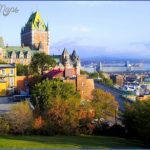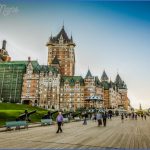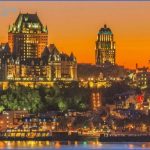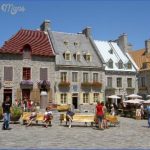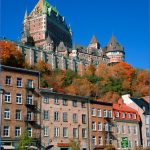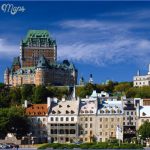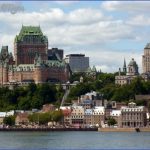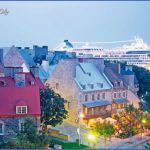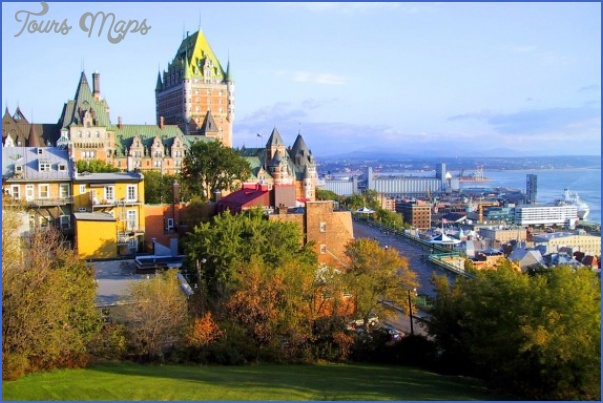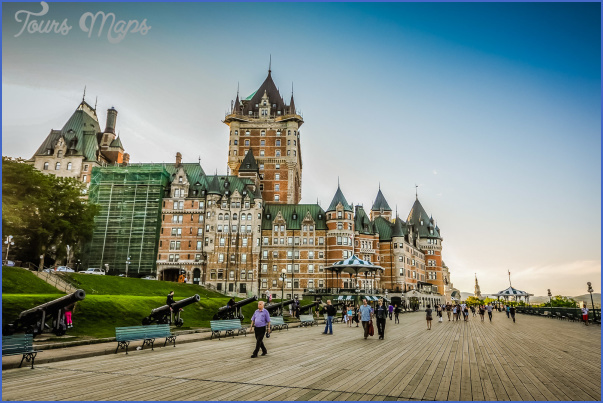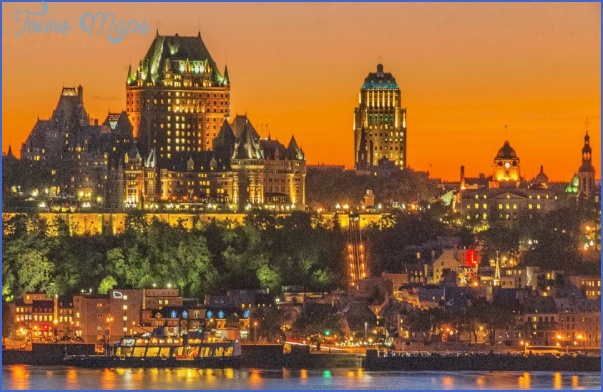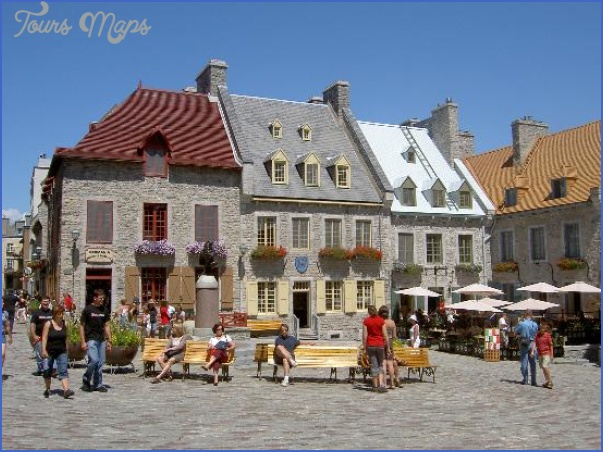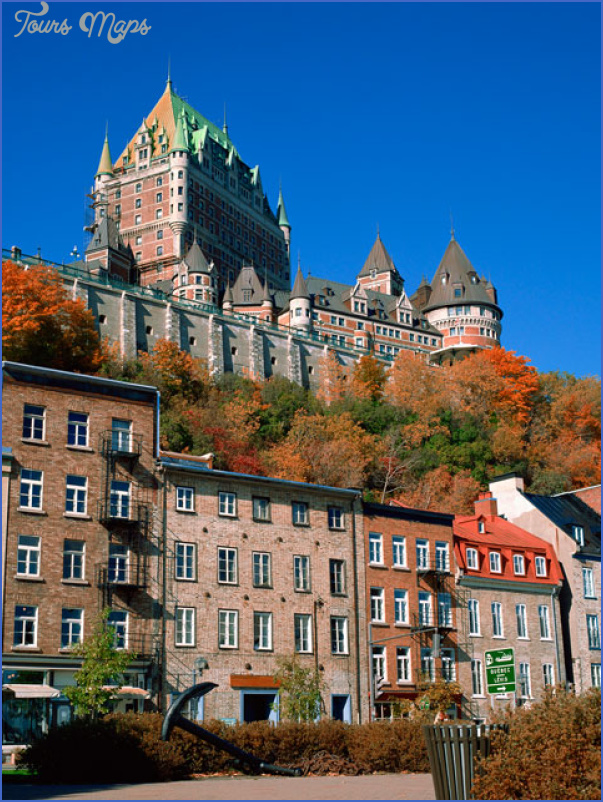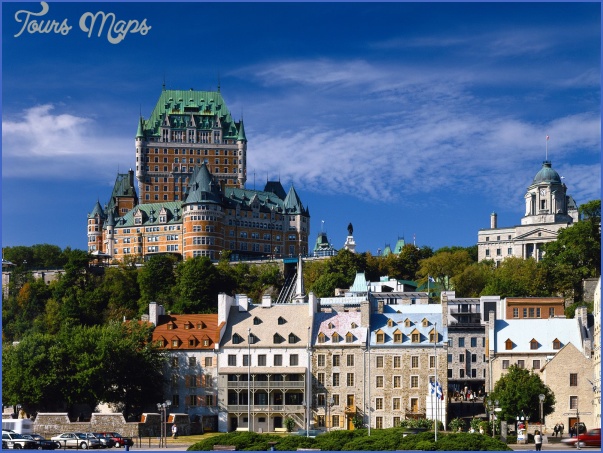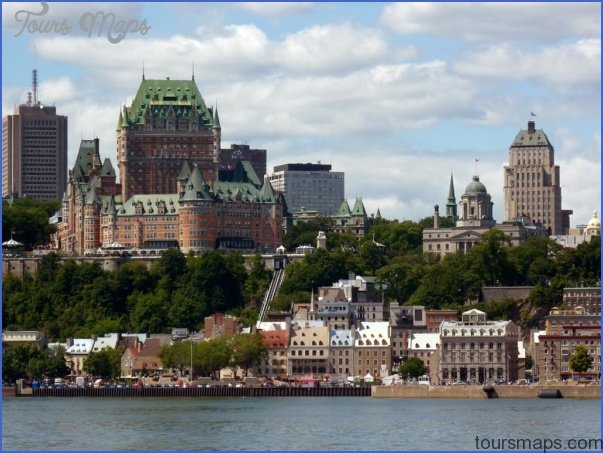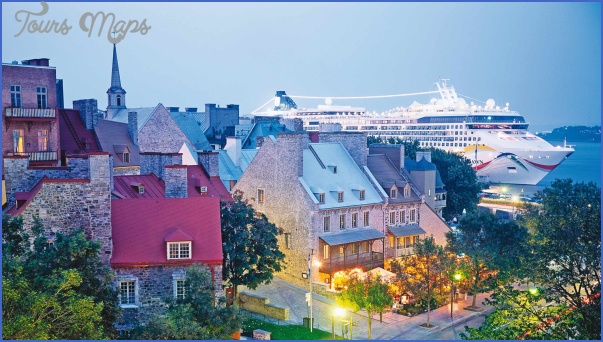Quebec City is the most European city on the North American continent, with one of the famous old hotels dating back to 1892 Le Chateau Frontenac.
Quebec City is one of American’s best-kept historical centers with old walls, cobblestone streets, old battlefields. The city’s citizens, the Quebecois, are fiercely independent and continue to demand independence from Canada. Quebec Libre! appears on walls. The provincial flag, white fleur-de-lis placed in each quarter of royal blue, flies everywhere. Quebec is Catholic; most of the rest of Canada is Protestant.
Quebec, the province, has a population of six million; five million speak only French. Canadian money is printed in French and English. All labels and directions for product use are printed in both languages. The province of Quebec, bent on retaining its French character, rates its hotels and other hostelries by a system of fleurs-de-lis, the French heraldic device resembling three petals of an iris. Instead of the one to five stars often used in rating, the Quebec tourism department awards one to five fleurs-de-lis. Hostelry dining rooms get one to four forks, depending on quality of cuisine.
Politically the country is divided into ten provinces and two territories. In the east are the Atlantic provinces: Nova Scotia (the Nova Scotia Peninsula and the island of Cape Breton), Prince Edward Island, Newfoundland and New Brunswick. Area 208,000 square miles. Population 2.2 million.
Of the four Maritime provinces of Canada, Nova Scotia has the most developed tourist industry. Halifax, the capital, is joined to Dartmouth by two suspension bridges. Together they form the largest metropolitan area east of Montreal. Being an island, no part of Nova Scotia is more than thirty-five miles from the sea.
New Brunswick has vast, virgin forests and glistening white seashores. The Bay of Fun-dy tides are the highest in the world. After rising forty feet they rush back to the open sea leaving miles of tidal flats. Fundy National Park features camping, hiking, boating, horseback riding and nature trails.
Unlike the other Atlantic provinces tiny Prince Edward Island is given over to gently rolling hills where the visitor is never more than twenty miles from the sea. Two ferry services bring visitors from neighboring Nova Scotia and from New Brunswick. Potato farming, fishing, and lobstering are principal occupations on the island. One of the best ways to enjoy the lobsters is to dine with the residents at the lobster dinners sponsored by the churches and local communities. Attractions include the Anne of Green Gables Festival, as well as lobster, strawberry and potato blossom festivals and craft fairs. Prince Edward Island, or P.E.I., is the smallest Canadian province.
Quebec City Photo Gallery
Maybe You Like Them Too
- Explore Doncaster, United Kingdom with this detailed map
- Explore Arroyito, Argentina with this Detailed Map
- Explore Belin, Romania with this detailed map
- Explore Almudévar, Spain with this detailed map
- Explore Aguarón, Spain with this detailed map

